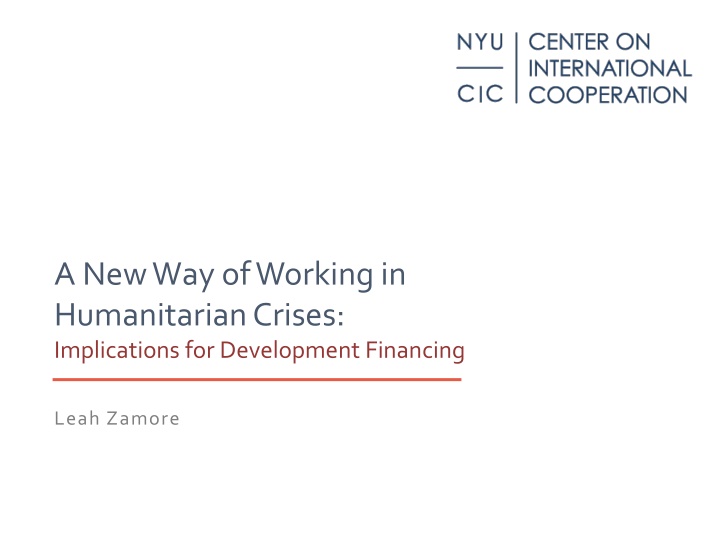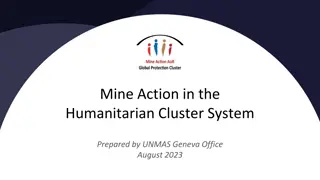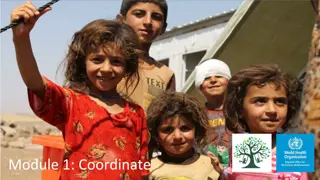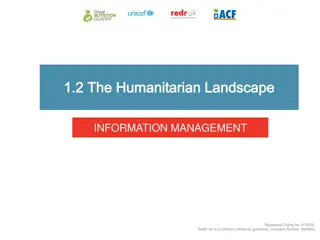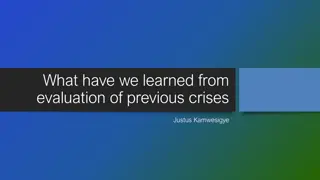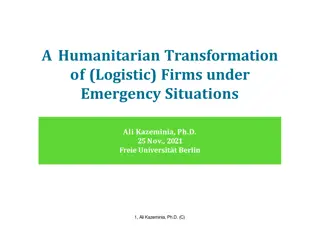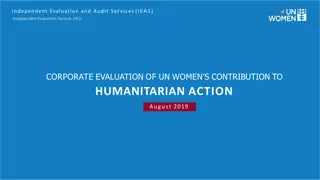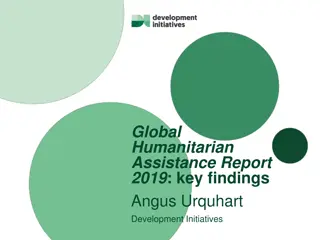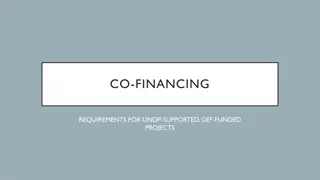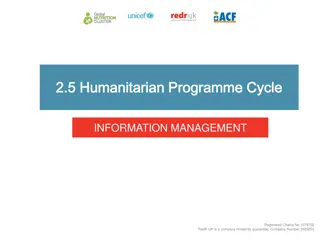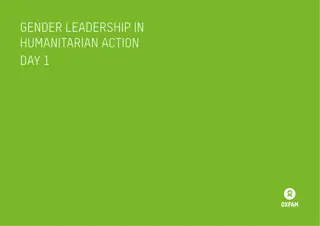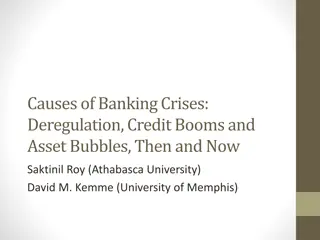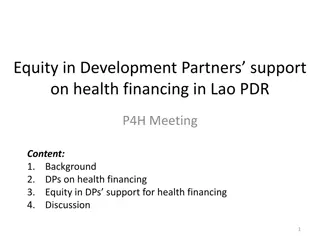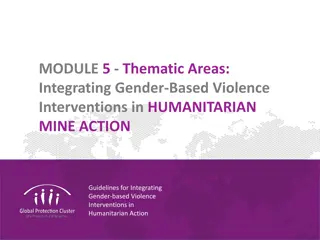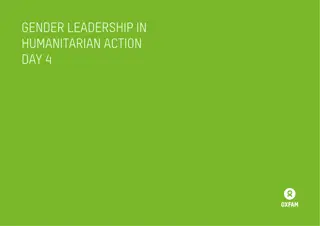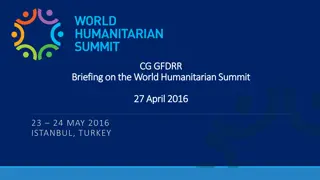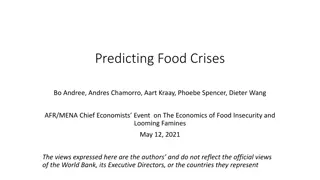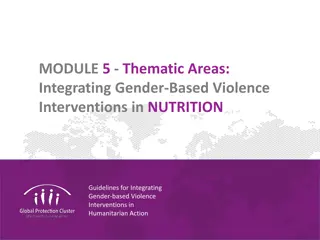Innovative Approaches in Humanitarian Crises and Development Financing
This study explores the New Way of Working in humanitarian crises, focusing on reinforcing national systems, anticipating crises, and transcending humanitarian-development divides. Promising trends include rising government ownership and increased linkages between humanitarian activities and government services. However, challenges such as slow financing disbursement and lack of coherence exist, alongside key gaps for development actors to address.
Download Presentation

Please find below an Image/Link to download the presentation.
The content on the website is provided AS IS for your information and personal use only. It may not be sold, licensed, or shared on other websites without obtaining consent from the author.If you encounter any issues during the download, it is possible that the publisher has removed the file from their server.
You are allowed to download the files provided on this website for personal or commercial use, subject to the condition that they are used lawfully. All files are the property of their respective owners.
The content on the website is provided AS IS for your information and personal use only. It may not be sold, licensed, or shared on other websites without obtaining consent from the author.
E N D
Presentation Transcript
A New Way of Working in Humanitarian Crises: Implications for Development Financing Leah Zamore
Quick overview: CIC s ongoing review of the New Way of Working The study examines progress and challenges related to implementation of the New Way of Working at country level. The New Way of Working has three elements: 1. Reinforce, do not replace, national and local systems 2. Anticipate, do not wait, for crises 3. Transcend the humanitarian development peacebuilding divide by working towards collective outcomes, based on comparative advantages, over multi-year timelines
A selection of promising trends Rising government ownership at national and local levels Increased recognition of the need to support rather than supplant national and local coordination and service delivery capacities Growing linkages between humanitarian activities and government social services/social protection systems New or adapted development financing instruments designed for use in crisis-affected settings Greater availability of anticipatory financing in relation to natural disasters and health crises
Selectedchallenges and constraints Development financing can be slow to disburse and difficult to adapt Funding is often earmarked to specific, small-scale projects, and tends to bypass country systems Funding for prevention and preparedness is minimal Even in crisis/conflict contexts, programming is not always informed by humanitarian or peacebuilding concerns There can be a lack of coherence between funding for programs and reforms aimed at fiscal consolidation and those aimed at strengthening public systems
Four key gaps that development actors could help fill 1. Supporting governments to put in place systems and procedures for responding to protracted crises, such as those related to fiscal decentralisation and personnel deployment 2. Supporting governments to overcome exogenous constraints on development: illicit capital flows; vulnerability to commodity/currency/financial shocks; debt; conflict spillovers 3. Providing additional development support, especially to refugee-hosting governments 4. Supporting efforts to strengthen literacy and engagement among country teams when it comes to affected governments fiscal and budgetary processes
Key overarching questions What incentives or policies are needed to ensure that development aid redounds quickly, directly, and sustainably to the benefit of crisis-affected communities? How can commitments made by development actors, such as national ownership and use of country systems, be responsibly adapted and pursued in crisis contexts? Beyond the UN reforms, what changes are needed to improve development coordination, including coordination among and within governments, bilateral donors, and IFIs? How can development donors and actors best use their leverage, resources, and expertise to help address the exogenous drivers of vulnerability and impoverishment? What does or should success look like in protracted crisis contexts?
